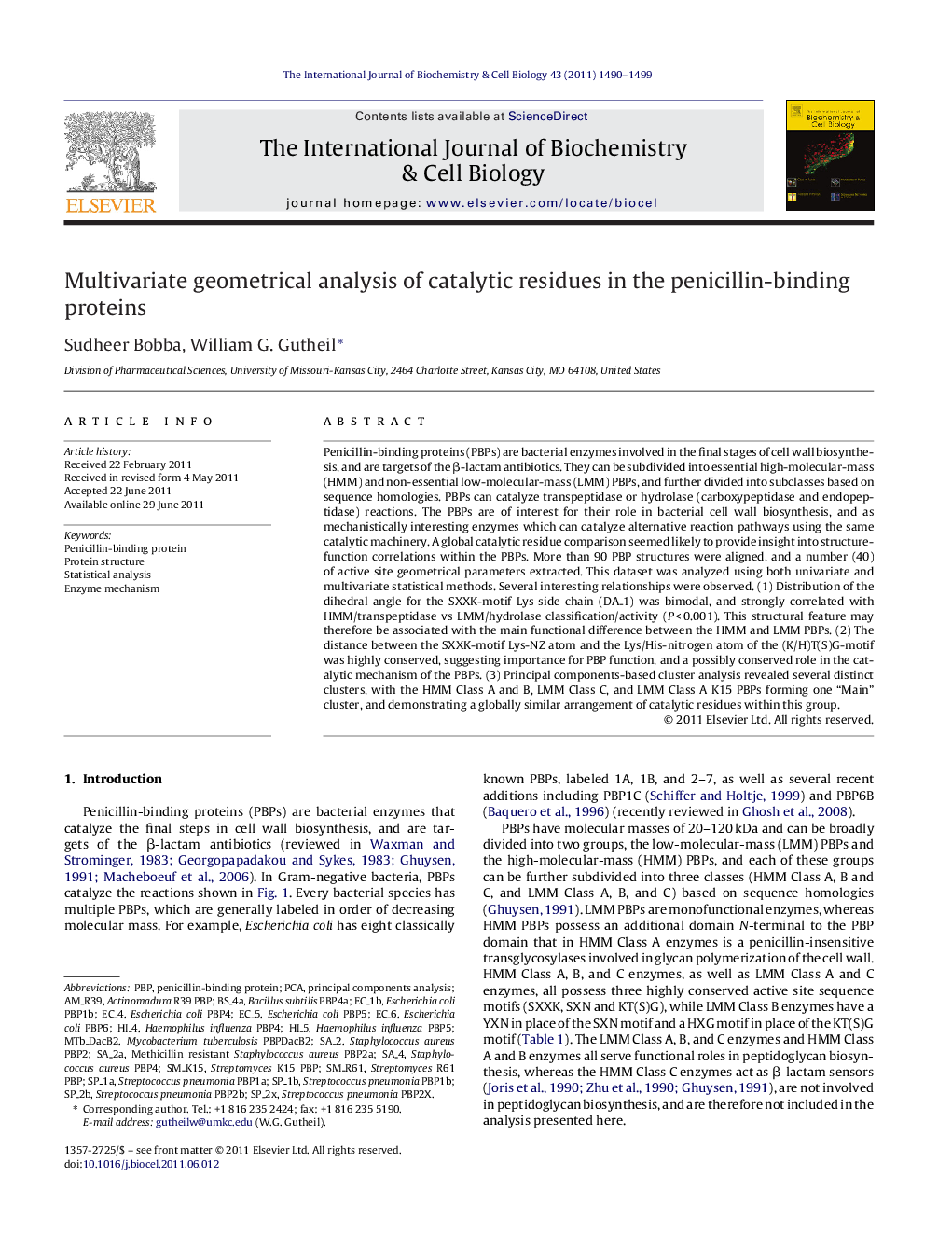| کد مقاله | کد نشریه | سال انتشار | مقاله انگلیسی | نسخه تمام متن |
|---|---|---|---|---|
| 1983937 | 1539925 | 2011 | 10 صفحه PDF | دانلود رایگان |

Penicillin-binding proteins (PBPs) are bacterial enzymes involved in the final stages of cell wall biosynthesis, and are targets of the β-lactam antibiotics. They can be subdivided into essential high-molecular-mass (HMM) and non-essential low-molecular-mass (LMM) PBPs, and further divided into subclasses based on sequence homologies. PBPs can catalyze transpeptidase or hydrolase (carboxypeptidase and endopeptidase) reactions. The PBPs are of interest for their role in bacterial cell wall biosynthesis, and as mechanistically interesting enzymes which can catalyze alternative reaction pathways using the same catalytic machinery. A global catalytic residue comparison seemed likely to provide insight into structure-function correlations within the PBPs. More than 90 PBP structures were aligned, and a number (40) of active site geometrical parameters extracted. This dataset was analyzed using both univariate and multivariate statistical methods. Several interesting relationships were observed. (1) Distribution of the dihedral angle for the SXXK-motif Lys side chain (DA_1) was bimodal, and strongly correlated with HMM/transpeptidase vs LMM/hydrolase classification/activity (P < 0.001). This structural feature may therefore be associated with the main functional difference between the HMM and LMM PBPs. (2) The distance between the SXXK-motif Lys-NZ atom and the Lys/His-nitrogen atom of the (K/H)T(S)G-motif was highly conserved, suggesting importance for PBP function, and a possibly conserved role in the catalytic mechanism of the PBPs. (3) Principal components-based cluster analysis revealed several distinct clusters, with the HMM Class A and B, LMM Class C, and LMM Class A K15 PBPs forming one “Main” cluster, and demonstrating a globally similar arrangement of catalytic residues within this group.
Figure optionsDownload high-quality image (158 K)Download as PowerPoint slideHighlights
► Performed a global geometrical comparison of active site residues in the PBPs.
► HMM Class A and B, LMM Class C, and the SM_K15 LMM Class A PBPs form one “Main” cluster.
► Other LMM Class A, and the R61 Class B PBPs fell into several distinct subclusters.
► The geometry of Lys-1 is correlated with HMM/transpeptidase vs LMM/hydrolase classification.
► The distance between the Lys-1 NZ atom and the Lys/His-4 nitrogen atom is highly conserved.
Journal: The International Journal of Biochemistry & Cell Biology - Volume 43, Issue 10, October 2011, Pages 1490–1499